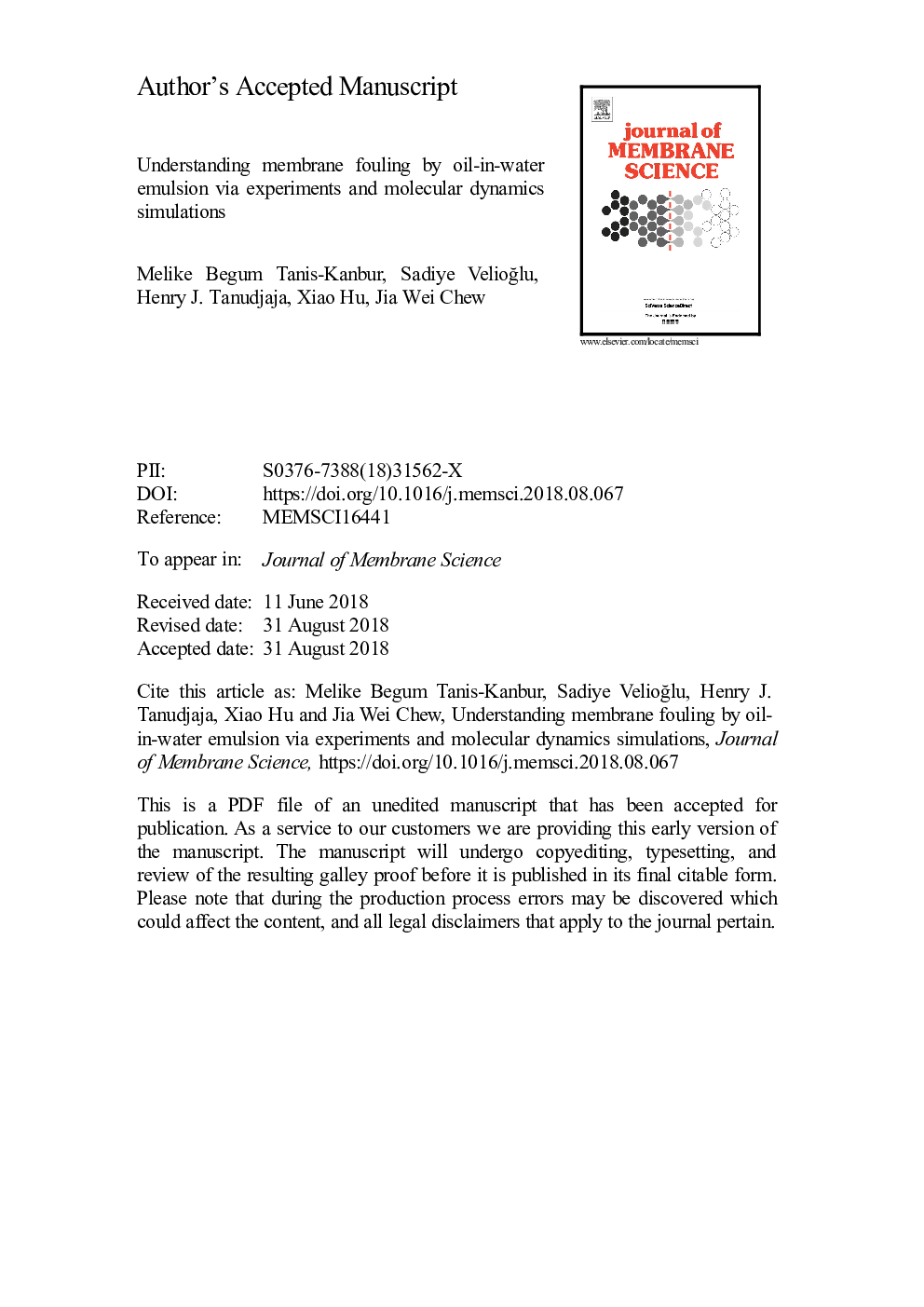| کد مقاله | کد نشریه | سال انتشار | مقاله انگلیسی | نسخه تمام متن |
|---|---|---|---|---|
| 8960309 | 1646400 | 2018 | 33 صفحه PDF | دانلود رایگان |
عنوان انگلیسی مقاله ISI
Understanding membrane fouling by oil-in-water emulsion via experiments and molecular dynamics simulations
ترجمه فارسی عنوان
شناخت ضایعات غشایی توسط امولسیون نفت در آب از طریق آزمایشات و شبیه سازی های پویایی مولکولی
دانلود مقاله + سفارش ترجمه
دانلود مقاله ISI انگلیسی
رایگان برای ایرانیان
کلمات کلیدی
موضوعات مرتبط
مهندسی و علوم پایه
مهندسی شیمی
تصفیه و جداسازی
چکیده انگلیسی
Membrane-based filtration is promising for the treatment of oily wastewater with stable micron-sized oil droplets, but is unfortunately limited by the inevitable membrane fouling phenomenon. To advance the understanding on membrane fouling by oil emulsion, this study made use of the direct observation through the membrane (DOTM) technique to experimentally visualize the evolution of fouling and determine critical flux, and also molecular dynamics simulations to unveil the interfacial interactions and behaviors underlying the different fouling behaviors. Three oil emulsion types with similar mean droplet sizes were studied, namely, one without surfactant, one stabilized by sodium dodecyl sulfate (SDS; a negatively charged surfactant) and one stabilized by dodecyltrimethylammonium bromide (DTAB; a positively charged surfactant). DOTM results indicate that the critical flux was the highest in the absence of surfactant and lowest for the DTAB-stabilized ones, while simulation results indicate that the interaction energies are clearly different among the different oil emulsion types. Both hence affirm that the presence of surfactant and different surfactant type distinctly changes the fouling tendencies. The key conclusions on the different fouling tendencies among the three oil emulsion types are summarized as follows. Firstly, the highest critical flux in the absence of any surfactant is linked to greatest oil-water interaction and least oil-membrane interaction, both of which cause the oil molecule to prefer being in the bulk aqueous feed. The radial distribution function (RDF) further substantiates this. Secondly, the higher critical flux exhibited by the SDS-stabilized oil emulsion compared to the DTAB-stabilized ones could be attributed to the negative charge of the former. Simulations affirm the comparatively greater oil-membrane repulsion through the RDF profile, lower oil-membrane interaction and higher oil-water interaction of the SDS-stabilized oil emulsion. Thirdly, despite surfactants generally have a stabilizing effect on oil emulsions, DOTM images show that coalescence was most extensive for the DTAB-stabilized oil emulsion, because of the greatest oil-membrane attraction and least oil-oil repulsion. Coupling both experiments and simulations, this study enhanced the mechanistic understanding on the effect of surfactant on membrane fouling by emulsions of the same oil.
ناشر
Database: Elsevier - ScienceDirect (ساینس دایرکت)
Journal: Journal of Membrane Science - Volume 566, 15 November 2018, Pages 140-150
Journal: Journal of Membrane Science - Volume 566, 15 November 2018, Pages 140-150
نویسندگان
Melike Begum Tanis-Kanbur, Sadiye VelioÄlu, Henry J. Tanudjaja, Xiao Hu, Jia Wei Chew,
